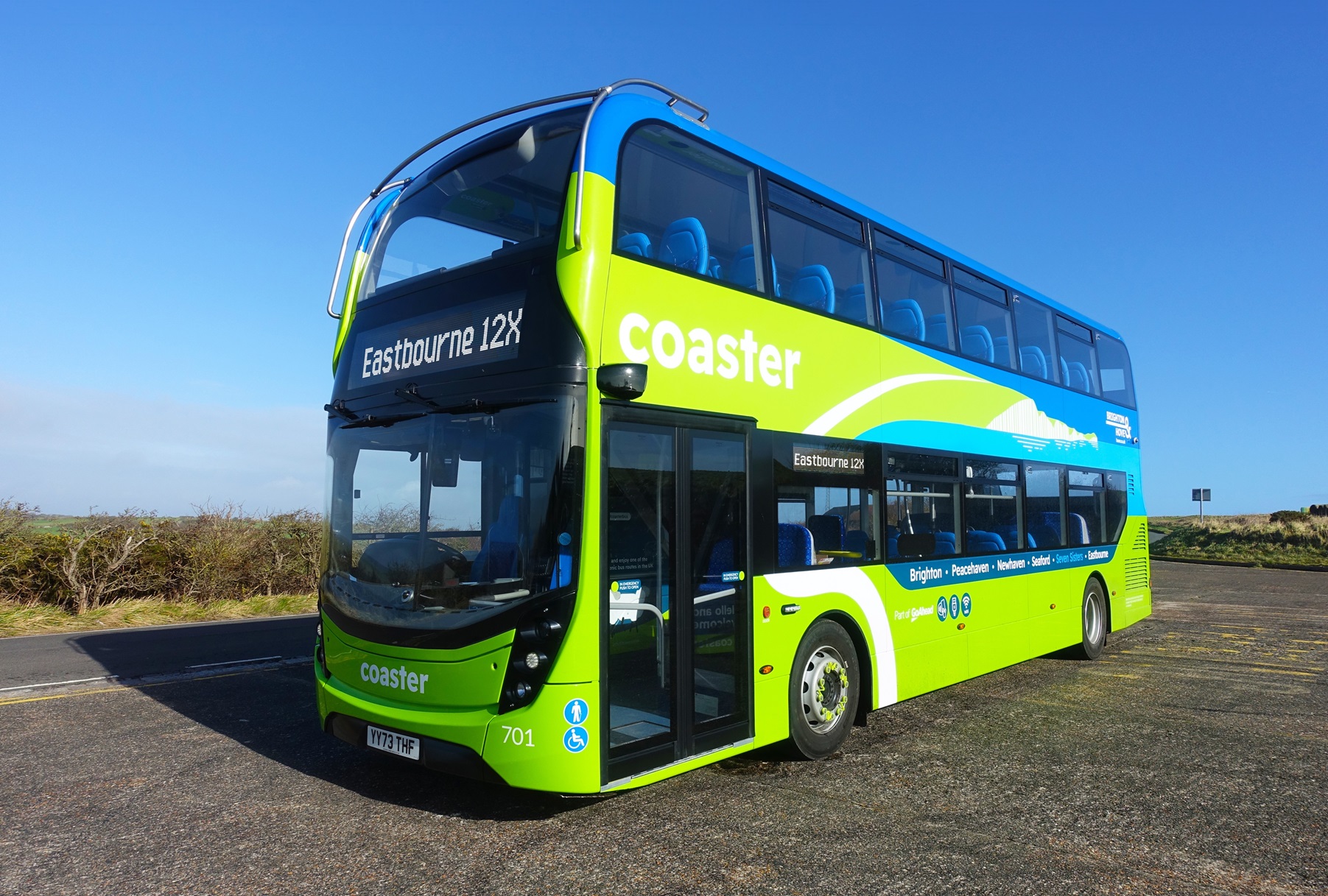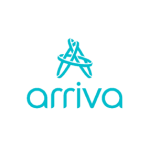Giving equal access for disabled customers and enabling them to feel comfortable using buses has already improved greatly, and it will advance further in October with the accessible information regulations. But while much of that has been legislated, other steps have developed at local level. Few organisations can claim to have been responsible for as much of that as Brighton and Hove Buses and Metrobus via its accessibility and communities department.
Some other operators have now followed that lead. But the South Coast business remains the only bus company with the highest accreditation in the Department for Transport (DfT) Inclusive Transport Leaders scheme as one of various memberships it holds surrounding access-for-all.
Accessibility and Communities Manager Victoria Garcia (pictured, above) notes how her department’s work applies equally to people who, while not disabled, have accessibility needs. Everyone will fall into the latter category during their lifetime, either temporarily or permanently. “That could be down to recovering from an operation and needing the step to be lowered, or even travelling with children or heavy shopping,” she explains.
“If we want people to choose bus, we need to design vehicles with space for all – including those carrying the weekly shop.”
Bus accessibility brings financial benefit at modest cost
That feeds into why the bus industry should put accessibility and disability awareness front and centre. There is a significant commercial interest in doing so, Victoria adds.
Financial benefits sit against a relatively modest cost of optimising vehicles, and working with communities to assist them and build confidence in using buses. Engagement can be as simple as helping people to apply for a concessionary pass or collaborating with third-party ‘travel training’ programmes; buses are provided free of charge by that operator for that.
Brighton and Hove is also opening a travel confidence programme. It uses a wooden mock-up bus in the operator’s travel centre and engages with schools to provide children with travel support and guidance on how to use the bus. Free carriage to and from the travel centre is included.

Victoria has worked with countless societies and charities – such as Guide Dogs and the Thomas Pocklington Trust – to build confidence among would-be bus passengers. Meanwhile, internal disability awareness training is entrenched in the operator’s way of working. The course was taken by Managing Director Ed Wills within two weeks of his arrival.
“If senior team members do not understand the accessibility, it will be a failure,” says Victoria. “Ultimately, they hold the chequebook. But Ed and the directors are all fully onboard. Ed leads our monthly accessibility meeting. We have always done this for the right reasons, but it is commercially viable as well.”
Three-tier philosophy upon which accessibility approach is built
Management buy-in is one part of a three-tier philosophy around accessibility. Second is the dedicated resource of Victoria and Accessibility Officer Sam Hart. They meet with, listen to and learn from the lived experiences of disabled people. Third is accessibility being within the operator’s change management policy.
The latter is key, Victoria explains “It means that everything we do is looked at with accessibility in mind. Design, policy, communications, training material – it cuts across the lot.” She meets new staff and has contributed to industry-wide matters on accessibility, including via secondment to DfT. The business shares its knowledge and learnings with other operators.
Illustrating more recent work is a batch of Alexander Dennis Enviro400 double-deckers bought for the Coaster route between Brighton and Eastbourne. Brighton and Hove worked closely with the manufacturer on those vehicles’ internal specification. Victoria also credits Wrightbus for similar work on GB Kite Hydroliner single-deckers with Metrobus.
“A few years ago, manufacturers were less open to what we wanted, but now they are very understanding. More operators are asking them the same questions.” In one instance more recently, a vehicle supplier believed it could not do what was being sought. “But it got its top engineers involved. That led to a solution.”

Careful vehicle consideration part of bus accessibility mission
The Coaster Enviro400s have dementia-friendly seating, following dementia-friendly flooring already adopted. Brighton and Hove worked with the Alzheimer’s Society on the seats and Victoria notes that the design also benefits customers with sight loss.
Double wheelchair user bays are favoured, but retained is a taxi guarantee if a wheelchair user is unable to board for any reason. Its cost is nominal, but its value is significant. Although wheelchair users have priority, an example of needing the guarantee could be the presence of a disabled child in an adapted buggy that cannot be folded.
New stock is not the only consideration in vehicle accessibility. Some second-hand mid-life double-deckers were subject to refurbishment and brought into line with the rest of the fleet. That was important, Victoria notes; should customers notice that some buses don’t have the same accessibility features as others, it could damage confidence in travelling.
A further contributor to confidence is the bus stop. All 2,000 served by Brighton and Hove have been audited for accessibility and graded appropriately. That information will be published so users can decide which stops suit them. “There can be a fear about stops being inaccessible. This work will help passengers, but it will also inform local authorities on where improvements may be needed.”
Accessibility focus brings benefits to bus patronage
For an industry without money to burn, what are the commercial realities of taking accessibility seriously? There are many, and all are positive, says Victoria. “If we ensure the service is more accessible for disabled people, it works better for everyone.”
Configuring vehicles to be more accessible can reduce stop dwell times, as does consideration of users with heavy shopping. Victoria notes that optimising a bus for accessibility does not necessarily reduce seating capacity if tip-ups are fitted. Dementia friendly flooring, meanwhile, costs nothing extra. “It is down to the colours. The same with seats.”

The primary commercial return is from more passengers. Brighton and Hove and Metrobus’s approach contributes to collective concessionary patronage being at 87% of pre-pandemic levels, higher than for many other operators. Engaging with charities and disabled people’s groups helps to spread the word that buses are welcoming; that leads to “a snowball effect,” Victoria believes.
Does the wider bus industry fully understand accessibility? Largely so, but there is room for improvement, she adds. Accessibility leading Catch the Bus Month in September is viewed positively. Leveraging those advances allows the commercial benefit to shine through. There is room for change to some legislation around the sizing of on-bus accessible space, she believes, although that could follow via the PSVAR review.
Over-complicating things is undesirable, however. Brighton and Hove and Metrobus avoid app-based indicators of wheelchair user bay occupancy because its status can change rapidly. A suggestion of using a camera and artificial intelligence to monitor the bay was also swerved.
A bus operator’s consideration of the value of work on disability and accessibility aspects should be built around various aspects, but Victoria boils it down to basics. “Think about corporate reputation. We are doing this for the right reasons, but it is commercially valuable. This is not a case of whether you can afford to do it; rather, it is whether you can’t.”
Ed Wills: The value of accessibility from a leader’s point of view
I sometimes get asked why we have an accessibility team when it’s not the norm to prioritise this in the bus industry. My answer is simple. Being accessible ensures easier access for all our customers and it is commercially viable, too!
Why? Because the ‘purple pound’ is worth a whopping £274 billion a year to the UK economy. We also know that 75% of disabled people and their families have walked away from a UK business because of poor accessibility or customer service.
£2 billion a year is lost by businesses ignoring the needs of disabled people. Worryingly, there is also an estimated loss of £42 million a month to transport providers.
But it’s even bigger than that. We now know that accessibility will impact everyone at some point in their lifetime. That impacts the way customers access our services, as someone post-operative may not be able to as easily board the bus if the step is not lowered for them by the driver.
If we don’t design our buses and policies to be accessible, or train our colleagues to be more helpful, then this could affect all our customers – which then affects our business.
If the ‘purple pound’ is worth £274 billion, one in five of the population is disabled, and accessibility affects 100% of the population at some point, then how much would the value of the so-called ‘accessible pound’ be?
And if transport operators are already losing £42 million a month due to not being accessible for disabled people, then how much are they losing by not being accessible for all customers?
The real question here is: ‘How can we afford to not prioritise accessibility?’




























